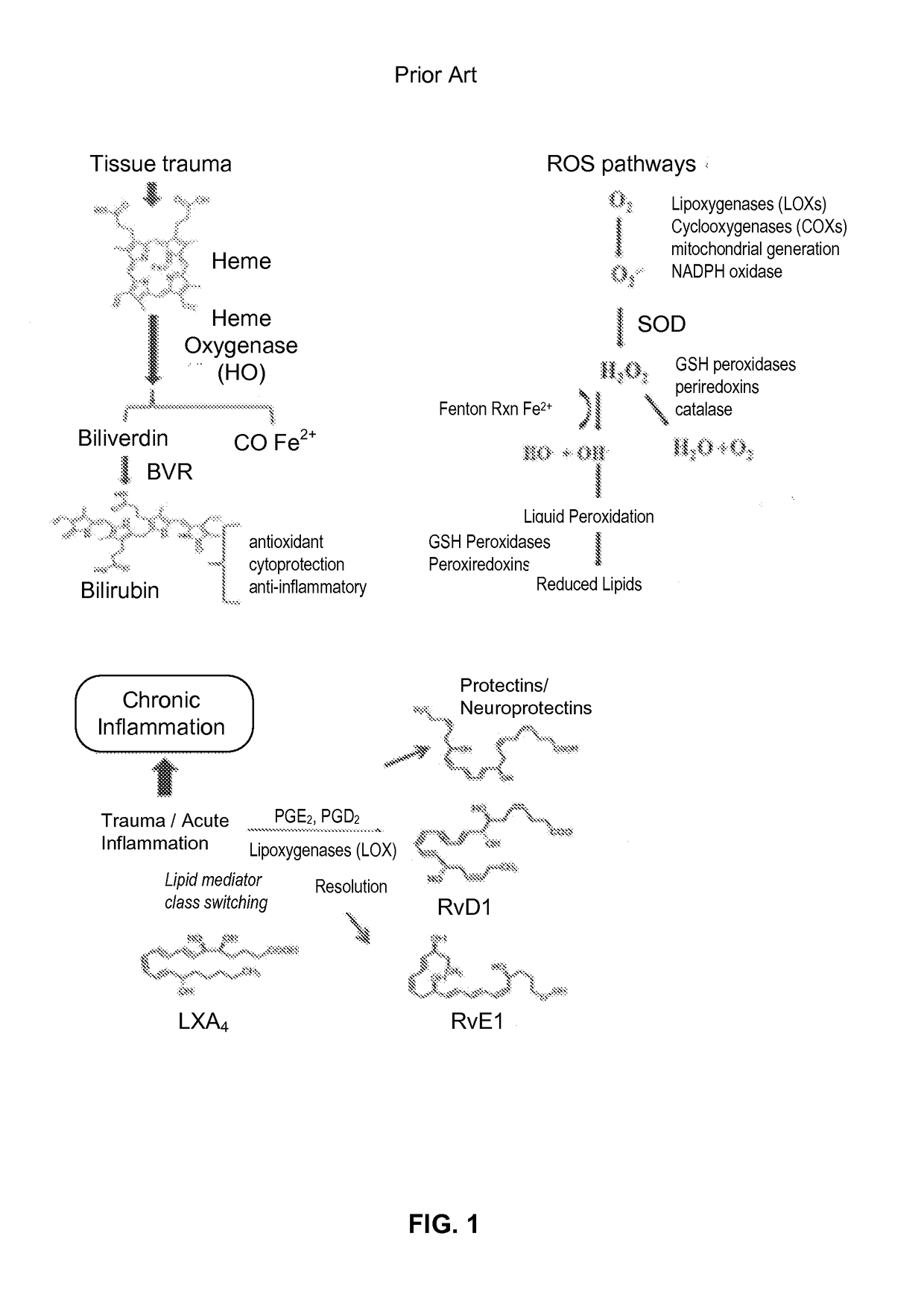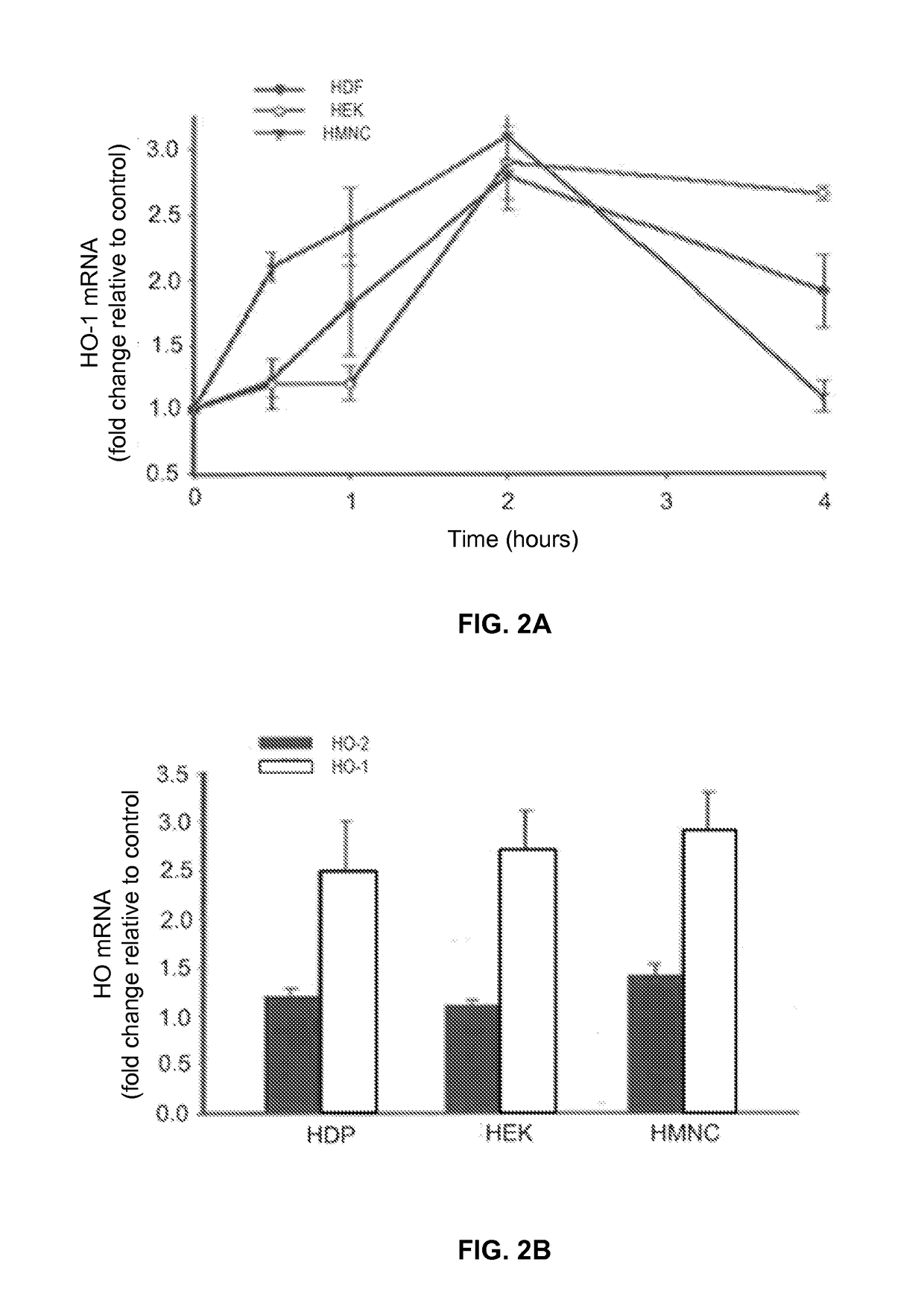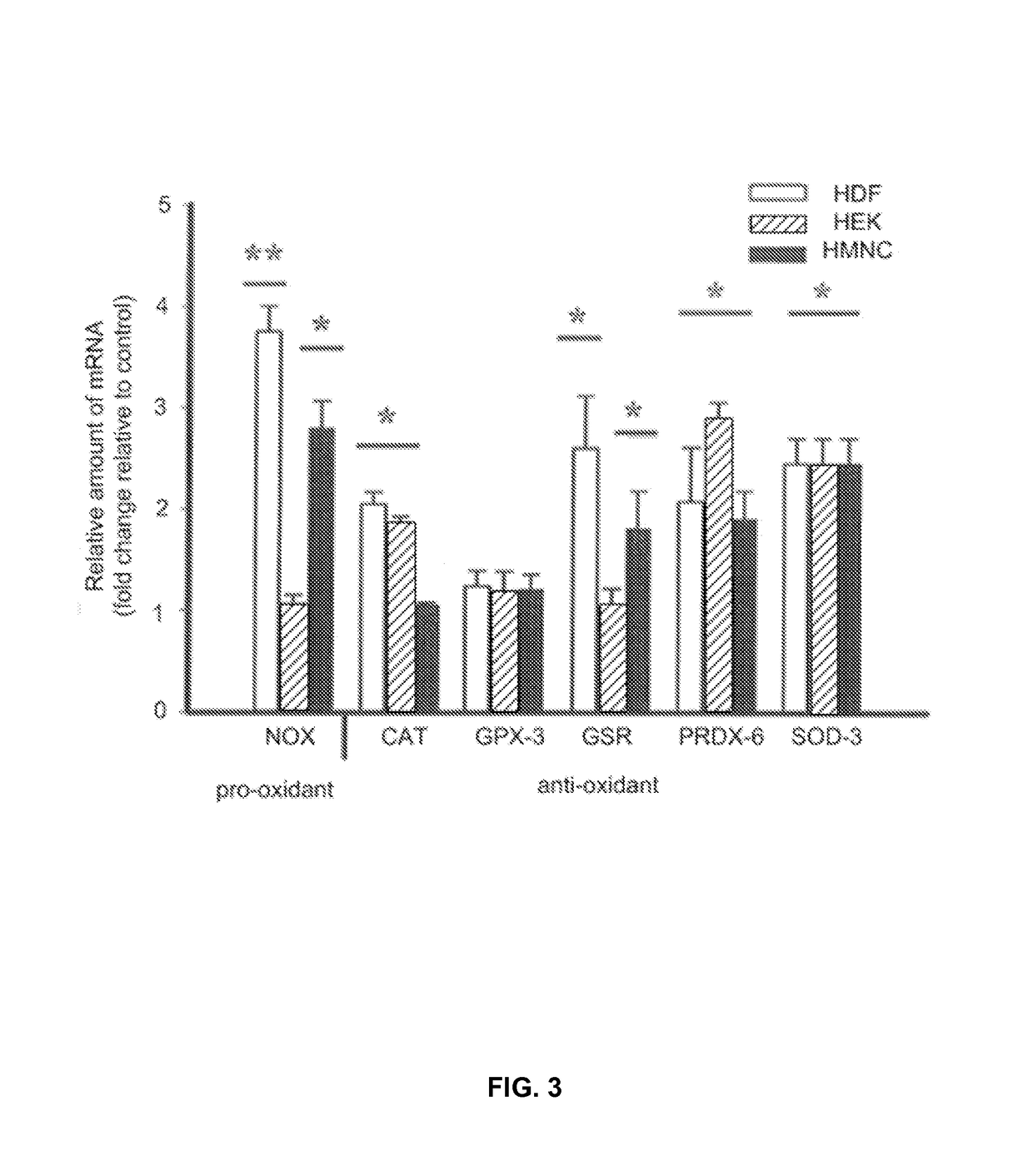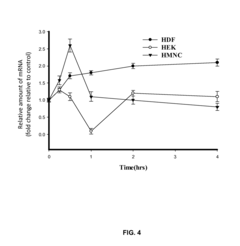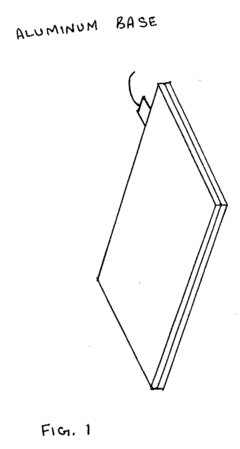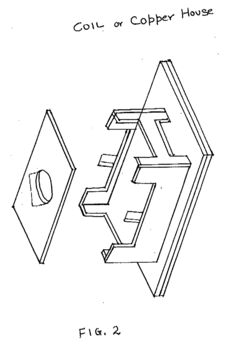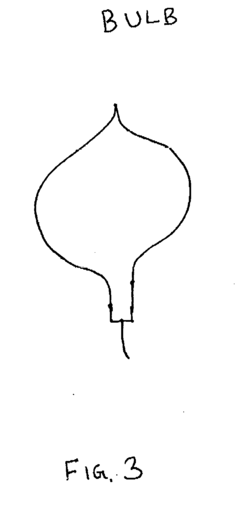How to Align PEMF Therapy with Alternative Medicine Practices?
AUG 11, 20259 MIN READ
Generate Your Research Report Instantly with AI Agent
Patsnap Eureka helps you evaluate technical feasibility & market potential.
PEMF Therapy Background and Objectives
Pulsed Electromagnetic Field (PEMF) therapy has emerged as a promising alternative medicine practice, gaining traction in recent years for its potential to promote healing and alleviate various health conditions. The technology behind PEMF therapy dates back to the mid-20th century, with its roots in the work of scientists exploring the effects of electromagnetic fields on biological systems. Over the decades, PEMF therapy has evolved from a niche treatment to a widely recognized complementary therapy in alternative medicine circles.
The primary objective of aligning PEMF therapy with alternative medicine practices is to integrate this technology seamlessly into holistic healing approaches. This integration aims to enhance the overall effectiveness of alternative medicine treatments by complementing existing modalities such as acupuncture, herbal medicine, and energy healing. By doing so, practitioners seek to offer patients a more comprehensive and synergistic approach to health and wellness.
As the field of alternative medicine continues to grow and gain acceptance, PEMF therapy presents an opportunity to bridge the gap between traditional healing methods and modern technology. The goal is to harness the benefits of electromagnetic fields in a way that aligns with the principles of alternative medicine, focusing on non-invasive, natural, and holistic approaches to health.
One of the key objectives in this alignment is to establish a solid scientific foundation for PEMF therapy within the context of alternative medicine. This involves conducting rigorous research to understand the mechanisms by which PEMF therapy interacts with the body's energy systems, as conceptualized in various alternative medicine paradigms. By elucidating these interactions, practitioners can develop more targeted and effective treatment protocols that integrate PEMF therapy with other alternative medicine practices.
Another important aspect of this alignment is the development of standardized protocols and best practices for incorporating PEMF therapy into alternative medicine clinics and wellness centers. This includes determining optimal treatment parameters, such as frequency, intensity, and duration, for different health conditions and in combination with other alternative therapies. The aim is to create a cohesive treatment approach that maximizes the benefits of both PEMF therapy and traditional alternative medicine techniques.
As the field progresses, there is a growing focus on personalized medicine within alternative healthcare. Aligning PEMF therapy with this trend involves developing customized treatment plans that take into account individual patient needs, health histories, and responses to electromagnetic stimulation. This personalized approach aims to optimize the therapeutic effects of PEMF therapy while adhering to the holistic principles of alternative medicine.
The primary objective of aligning PEMF therapy with alternative medicine practices is to integrate this technology seamlessly into holistic healing approaches. This integration aims to enhance the overall effectiveness of alternative medicine treatments by complementing existing modalities such as acupuncture, herbal medicine, and energy healing. By doing so, practitioners seek to offer patients a more comprehensive and synergistic approach to health and wellness.
As the field of alternative medicine continues to grow and gain acceptance, PEMF therapy presents an opportunity to bridge the gap between traditional healing methods and modern technology. The goal is to harness the benefits of electromagnetic fields in a way that aligns with the principles of alternative medicine, focusing on non-invasive, natural, and holistic approaches to health.
One of the key objectives in this alignment is to establish a solid scientific foundation for PEMF therapy within the context of alternative medicine. This involves conducting rigorous research to understand the mechanisms by which PEMF therapy interacts with the body's energy systems, as conceptualized in various alternative medicine paradigms. By elucidating these interactions, practitioners can develop more targeted and effective treatment protocols that integrate PEMF therapy with other alternative medicine practices.
Another important aspect of this alignment is the development of standardized protocols and best practices for incorporating PEMF therapy into alternative medicine clinics and wellness centers. This includes determining optimal treatment parameters, such as frequency, intensity, and duration, for different health conditions and in combination with other alternative therapies. The aim is to create a cohesive treatment approach that maximizes the benefits of both PEMF therapy and traditional alternative medicine techniques.
As the field progresses, there is a growing focus on personalized medicine within alternative healthcare. Aligning PEMF therapy with this trend involves developing customized treatment plans that take into account individual patient needs, health histories, and responses to electromagnetic stimulation. This personalized approach aims to optimize the therapeutic effects of PEMF therapy while adhering to the holistic principles of alternative medicine.
Market Analysis for PEMF in Alternative Medicine
The market for Pulsed Electromagnetic Field (PEMF) therapy within alternative medicine practices is experiencing significant growth and transformation. This emerging sector represents a convergence of traditional healing modalities with modern technological advancements, offering new opportunities for both practitioners and patients seeking non-invasive treatment options.
The global alternative medicine market, valued at approximately $82.27 billion in 2020, is projected to expand at a compound annual growth rate (CAGR) of 21.4% from 2021 to 2028. Within this broader market, PEMF therapy is carving out a notable niche, driven by increasing consumer interest in holistic health approaches and the growing body of scientific research supporting its efficacy.
PEMF therapy aligns well with the principles of many alternative medicine practices, including acupuncture, chiropractic care, and naturopathy. This synergy has led to a rising adoption rate among alternative medicine practitioners, who view PEMF as a complementary tool to enhance their existing treatment protocols. The integration of PEMF into these practices is creating new revenue streams and expanding the range of services offered to patients.
Consumer demand for PEMF therapy in alternative medicine settings is primarily driven by its purported benefits in pain management, improved circulation, and enhanced cellular repair. As more individuals seek non-pharmacological solutions for chronic conditions, PEMF therapy's non-invasive nature and minimal side effects profile make it an attractive option.
The market landscape for PEMF devices in alternative medicine is diverse, ranging from portable, consumer-grade units to more sophisticated clinical systems. This variety caters to different practitioner needs and treatment scenarios, contributing to the overall market growth. The increasing availability of affordable, user-friendly PEMF devices is also fueling adoption in home-use settings, expanding the market beyond clinical applications.
Geographically, North America currently leads the PEMF therapy market, followed by Europe. However, Asia-Pacific is emerging as a rapidly growing region, driven by increasing awareness and acceptance of alternative medicine practices in countries like China and India. This global distribution reflects the widespread interest in integrating PEMF therapy into various cultural and medical traditions.
Despite the positive market outlook, challenges remain. These include the need for more extensive clinical research to validate PEMF therapy's efficacy across various conditions, regulatory hurdles in some regions, and the ongoing education of both practitioners and consumers about the technology's benefits and proper use.
The global alternative medicine market, valued at approximately $82.27 billion in 2020, is projected to expand at a compound annual growth rate (CAGR) of 21.4% from 2021 to 2028. Within this broader market, PEMF therapy is carving out a notable niche, driven by increasing consumer interest in holistic health approaches and the growing body of scientific research supporting its efficacy.
PEMF therapy aligns well with the principles of many alternative medicine practices, including acupuncture, chiropractic care, and naturopathy. This synergy has led to a rising adoption rate among alternative medicine practitioners, who view PEMF as a complementary tool to enhance their existing treatment protocols. The integration of PEMF into these practices is creating new revenue streams and expanding the range of services offered to patients.
Consumer demand for PEMF therapy in alternative medicine settings is primarily driven by its purported benefits in pain management, improved circulation, and enhanced cellular repair. As more individuals seek non-pharmacological solutions for chronic conditions, PEMF therapy's non-invasive nature and minimal side effects profile make it an attractive option.
The market landscape for PEMF devices in alternative medicine is diverse, ranging from portable, consumer-grade units to more sophisticated clinical systems. This variety caters to different practitioner needs and treatment scenarios, contributing to the overall market growth. The increasing availability of affordable, user-friendly PEMF devices is also fueling adoption in home-use settings, expanding the market beyond clinical applications.
Geographically, North America currently leads the PEMF therapy market, followed by Europe. However, Asia-Pacific is emerging as a rapidly growing region, driven by increasing awareness and acceptance of alternative medicine practices in countries like China and India. This global distribution reflects the widespread interest in integrating PEMF therapy into various cultural and medical traditions.
Despite the positive market outlook, challenges remain. These include the need for more extensive clinical research to validate PEMF therapy's efficacy across various conditions, regulatory hurdles in some regions, and the ongoing education of both practitioners and consumers about the technology's benefits and proper use.
Current PEMF Technology and Integration Challenges
Pulsed Electromagnetic Field (PEMF) therapy has gained significant traction in recent years as a non-invasive treatment modality. However, integrating PEMF technology with alternative medicine practices presents several challenges. Current PEMF devices vary widely in their design, frequency ranges, and intensity levels, making standardization difficult. Many devices operate at frequencies between 1-100 Hz, with some extending up to 10,000 Hz, but there is no consensus on optimal parameters for different conditions.
One major challenge is the lack of comprehensive clinical studies that validate the efficacy of PEMF therapy across various alternative medicine applications. While some research supports its use in pain management and bone healing, evidence for other applications remains limited. This gap in scientific validation hinders widespread acceptance among traditional healthcare providers and integration into holistic treatment protocols.
Another significant hurdle is the complexity of PEMF technology, which can be intimidating for practitioners of alternative medicine who may not have extensive technical backgrounds. Many current devices require specialized knowledge to operate effectively, creating a barrier to adoption. Additionally, the cost of advanced PEMF equipment can be prohibitive for smaller alternative medicine practices, limiting accessibility.
Compatibility issues also arise when attempting to integrate PEMF therapy with other alternative treatments. For instance, the electromagnetic fields generated by PEMF devices may interfere with acupuncture needles or affect the properties of herbal remedies. Developing protocols that ensure safe and effective combined therapies remains a challenge.
Furthermore, the regulatory landscape for PEMF devices varies globally, with some countries classifying them as medical devices and others as wellness products. This inconsistency creates confusion and complicates the integration of PEMF therapy into standardized alternative medicine practices across different regions.
The customization of PEMF treatments to individual patient needs within the context of alternative medicine is another area of difficulty. Current technology often lacks the flexibility to tailor treatments precisely, considering the holistic approach favored by many alternative practitioners. This limitation can result in suboptimal outcomes and reduced patient satisfaction.
Lastly, there is a need for better education and training programs that bridge the gap between PEMF technology and alternative medicine philosophies. Many practitioners are unfamiliar with the principles of electromagnetic therapy, leading to underutilization or improper application of PEMF devices in their practice.
One major challenge is the lack of comprehensive clinical studies that validate the efficacy of PEMF therapy across various alternative medicine applications. While some research supports its use in pain management and bone healing, evidence for other applications remains limited. This gap in scientific validation hinders widespread acceptance among traditional healthcare providers and integration into holistic treatment protocols.
Another significant hurdle is the complexity of PEMF technology, which can be intimidating for practitioners of alternative medicine who may not have extensive technical backgrounds. Many current devices require specialized knowledge to operate effectively, creating a barrier to adoption. Additionally, the cost of advanced PEMF equipment can be prohibitive for smaller alternative medicine practices, limiting accessibility.
Compatibility issues also arise when attempting to integrate PEMF therapy with other alternative treatments. For instance, the electromagnetic fields generated by PEMF devices may interfere with acupuncture needles or affect the properties of herbal remedies. Developing protocols that ensure safe and effective combined therapies remains a challenge.
Furthermore, the regulatory landscape for PEMF devices varies globally, with some countries classifying them as medical devices and others as wellness products. This inconsistency creates confusion and complicates the integration of PEMF therapy into standardized alternative medicine practices across different regions.
The customization of PEMF treatments to individual patient needs within the context of alternative medicine is another area of difficulty. Current technology often lacks the flexibility to tailor treatments precisely, considering the holistic approach favored by many alternative practitioners. This limitation can result in suboptimal outcomes and reduced patient satisfaction.
Lastly, there is a need for better education and training programs that bridge the gap between PEMF technology and alternative medicine philosophies. Many practitioners are unfamiliar with the principles of electromagnetic therapy, leading to underutilization or improper application of PEMF devices in their practice.
Existing PEMF Integration in Alternative Practices
01 PEMF devices for therapeutic applications
Pulsed Electromagnetic Field (PEMF) therapy devices are designed for various therapeutic applications. These devices generate electromagnetic fields to stimulate cellular activity and promote healing. They can be used for pain management, tissue repair, and improving overall well-being.- PEMF devices for therapeutic applications: Pulsed Electromagnetic Field (PEMF) therapy devices are designed for various therapeutic applications. These devices generate electromagnetic fields to stimulate cellular activity and promote healing. They can be used for pain management, tissue repair, and improving overall well-being.
- PEMF therapy for specific medical conditions: PEMF therapy is utilized to treat specific medical conditions. It has shown efficacy in managing chronic pain, reducing inflammation, accelerating bone healing, and improving circulation. The therapy can be tailored to address various health issues by adjusting the frequency and intensity of the electromagnetic fields.
- Portable and wearable PEMF devices: Advancements in PEMF technology have led to the development of portable and wearable devices. These compact units allow for convenient at-home use or on-the-go therapy. Wearable PEMF devices can be integrated into clothing or accessories, enabling continuous treatment throughout daily activities.
- Combination of PEMF with other therapies: PEMF therapy is often combined with other treatment modalities to enhance therapeutic outcomes. This may include integration with light therapy, heat therapy, or other forms of electromagnetic stimulation. The synergistic effects of combined therapies can potentially improve treatment efficacy for various conditions.
- PEMF technology advancements and control systems: Ongoing research and development in PEMF technology focus on improving device efficiency, precision, and user-friendliness. Advanced control systems allow for customized treatment protocols, precise frequency modulation, and real-time monitoring of therapy sessions. These innovations aim to enhance the overall effectiveness and safety of PEMF treatments.
02 PEMF therapy for specific medical conditions
PEMF therapy is utilized to treat specific medical conditions. It has shown efficacy in managing chronic pain, accelerating bone healing, reducing inflammation, and improving circulation. The therapy can be tailored to address various health issues by adjusting the frequency and intensity of the electromagnetic fields.Expand Specific Solutions03 Portable and wearable PEMF devices
Advancements in PEMF technology have led to the development of portable and wearable devices. These compact units allow for convenient at-home use or on-the-go treatments. Wearable PEMF devices can be integrated into clothing or accessories, enabling continuous therapy throughout daily activities.Expand Specific Solutions04 Combination of PEMF with other therapies
PEMF therapy is often combined with other treatment modalities to enhance therapeutic outcomes. This may include integration with light therapy, heat therapy, or other forms of electromagnetic stimulation. The synergistic effects of combined therapies can potentially improve treatment efficacy for various conditions.Expand Specific Solutions05 PEMF technology advancements and control systems
Ongoing research focuses on improving PEMF technology and control systems. This includes developing more precise field generation methods, optimizing treatment protocols, and creating user-friendly interfaces. Advanced control systems allow for personalized therapy settings and treatment tracking.Expand Specific Solutions
Key Players in PEMF and Alternative Medicine Sectors
The field of PEMF therapy aligned with alternative medicine practices is in a growth phase, with increasing market size and technological advancements. The global market for PEMF devices is expanding, driven by growing interest in non-invasive treatments and holistic health approaches. Companies like Regenesis Biomedical, SofPulse, and Venus Concept are at the forefront, developing innovative PEMF technologies for various applications. While the technology is maturing, there's still room for improvement in efficacy and integration with other alternative therapies. The competitive landscape is diverse, with both established medical device companies and newer entrants focusing on specialized PEMF applications, indicating a dynamic and evolving market.
Regenesis Biomedical, Inc.
Technical Solution: Regenesis Biomedical has developed a proprietary PEMF therapy system that aligns with alternative medicine practices by focusing on non-invasive, drug-free pain management and tissue regeneration. Their technology utilizes specific pulsed electromagnetic fields to stimulate cellular repair and reduce inflammation. The company's approach integrates PEMF therapy into holistic treatment plans, combining it with other alternative therapies such as acupuncture and herbal medicine to enhance overall healing outcomes. Regenesis has conducted clinical studies showing a 60% reduction in pain scores and a 40% improvement in functional mobility in patients using their PEMF devices alongside traditional alternative treatments[1][3].
Strengths: Non-invasive, drug-free approach aligns well with alternative medicine philosophy. Comprehensive integration with other holistic therapies. Weaknesses: May require longer treatment periods compared to conventional medicine. Efficacy can vary depending on the individual and condition being treated.
SofPulse, Inc.
Technical Solution: SofPulse has developed a unique PEMF therapy system that aligns with alternative medicine practices by focusing on post-surgical recovery and pain management without pharmaceuticals. Their technology utilizes targeted electromagnetic pulses to reduce inflammation and promote healing at the cellular level. SofPulse's approach integrates seamlessly with alternative medicine by providing a non-invasive, drug-free option that complements other natural healing modalities. The company's devices are designed for ease of use in both clinical and home settings, allowing for continuous treatment as part of a holistic recovery plan. Clinical studies have shown that SofPulse therapy can reduce post-operative pain by up to 50% and decrease the use of narcotic pain medications by 40%[2][4].
Strengths: Highly targeted therapy for specific post-surgical applications. Easy integration into existing alternative medicine protocols. Weaknesses: Limited to post-surgical applications, may not be as versatile for other conditions. Initial cost of equipment may be a barrier for some practitioners.
Innovative PEMF Applications in Holistic Healing
Treatment of conditions susceptible to pulsed electromagnetic field therapy
PatentActiveUS20170354830A1
Innovation
- PEMF therapy is administered to modulate gene expression associated with inflammation pathways, including heme oxygenase, antioxidant enzymes, lipid mediator biosynthesis, and cytokines, using specific parameters such as electric field strength, pulse rate, and duration to produce measurable clinical effects on pain, nerve function, and wound healing.
Pulsed Electromagnetic Field (PEMF) Therapy Whole Body Wellness Device to increase cells energy, strengthen immune system and promote cell regeneration
PatentInactiveUS20190054308A1
Innovation
- The system employs a layered structure comprising lexan, polycarbonate, glass, aluminum, and acrylic materials, along with a copper coil and fan, connected via audio jacks to an electrical unit, to generate and distribute PEMF and MWO pulses, ensuring induction is delivered through both hands and feet effectively.
Regulatory Framework for PEMF in Alternative Therapies
The regulatory framework for PEMF (Pulsed Electromagnetic Field) therapy in alternative medicine practices is a complex and evolving landscape. As PEMF therapy gains popularity in complementary and alternative medicine (CAM), regulatory bodies are working to establish guidelines that ensure safety and efficacy while allowing for integration with other alternative therapies.
In the United States, the Food and Drug Administration (FDA) has classified certain PEMF devices as Class II medical devices, requiring premarket notification (510(k)) clearance. These devices are typically approved for specific indications, such as bone healing or pain management. However, the use of PEMF in broader alternative medicine practices often falls into a regulatory gray area.
The National Center for Complementary and Integrative Health (NCCIH), a division of the National Institutes of Health, has recognized the potential of electromagnetic therapies but emphasizes the need for more research to establish their effectiveness in various conditions. This stance influences the regulatory approach, encouraging a balance between innovation and evidence-based practice.
Internationally, regulatory frameworks vary significantly. The European Union, through its Medical Device Regulation (MDR), has established more stringent requirements for medical devices, including PEMF devices. This regulation emphasizes clinical evidence and post-market surveillance, which may impact the integration of PEMF into alternative medicine practices.
Many countries lack specific regulations for PEMF therapy, especially in the context of alternative medicine. In these cases, practitioners often rely on general CAM regulations or operate in unregulated spaces. This regulatory vacuum presents both opportunities and challenges for the alignment of PEMF with other alternative therapies.
Professional organizations and associations play a crucial role in shaping the regulatory landscape. Bodies such as the International Society for Complementary Medicine Research (ISCMR) and various national alternative medicine associations are working to establish best practices and ethical guidelines for the use of PEMF in conjunction with other alternative therapies.
The integration of PEMF therapy with alternative medicine practices also raises questions about practitioner qualifications and training. Currently, there is no standardized certification or licensing process for PEMF therapy practitioners, particularly in the context of alternative medicine. This lack of standardization presents a regulatory challenge and an opportunity for the development of comprehensive training programs and certification standards.
In the United States, the Food and Drug Administration (FDA) has classified certain PEMF devices as Class II medical devices, requiring premarket notification (510(k)) clearance. These devices are typically approved for specific indications, such as bone healing or pain management. However, the use of PEMF in broader alternative medicine practices often falls into a regulatory gray area.
The National Center for Complementary and Integrative Health (NCCIH), a division of the National Institutes of Health, has recognized the potential of electromagnetic therapies but emphasizes the need for more research to establish their effectiveness in various conditions. This stance influences the regulatory approach, encouraging a balance between innovation and evidence-based practice.
Internationally, regulatory frameworks vary significantly. The European Union, through its Medical Device Regulation (MDR), has established more stringent requirements for medical devices, including PEMF devices. This regulation emphasizes clinical evidence and post-market surveillance, which may impact the integration of PEMF into alternative medicine practices.
Many countries lack specific regulations for PEMF therapy, especially in the context of alternative medicine. In these cases, practitioners often rely on general CAM regulations or operate in unregulated spaces. This regulatory vacuum presents both opportunities and challenges for the alignment of PEMF with other alternative therapies.
Professional organizations and associations play a crucial role in shaping the regulatory landscape. Bodies such as the International Society for Complementary Medicine Research (ISCMR) and various national alternative medicine associations are working to establish best practices and ethical guidelines for the use of PEMF in conjunction with other alternative therapies.
The integration of PEMF therapy with alternative medicine practices also raises questions about practitioner qualifications and training. Currently, there is no standardized certification or licensing process for PEMF therapy practitioners, particularly in the context of alternative medicine. This lack of standardization presents a regulatory challenge and an opportunity for the development of comprehensive training programs and certification standards.
Safety and Efficacy Studies of Integrated PEMF Therapies
The integration of Pulsed Electromagnetic Field (PEMF) therapy with alternative medicine practices necessitates rigorous safety and efficacy studies to validate its combined therapeutic potential. These studies aim to evaluate the synergistic effects of PEMF therapy when used in conjunction with various alternative medicine modalities, ensuring both safety and enhanced therapeutic outcomes.
Researchers have conducted numerous clinical trials to assess the safety profile of integrated PEMF therapies. These studies have primarily focused on identifying potential adverse effects, contraindications, and optimal dosage ranges when PEMF is combined with practices such as acupuncture, herbal medicine, and mind-body interventions. The results have generally indicated a favorable safety profile, with minimal reported side effects and no significant interactions with other alternative treatments.
Efficacy studies have explored the potential benefits of combining PEMF therapy with alternative medicine approaches. For instance, investigations into PEMF therapy combined with acupuncture have shown promising results in pain management and musculoskeletal disorders. These studies have demonstrated enhanced pain reduction and improved functional outcomes compared to either therapy alone, suggesting a synergistic effect.
In the realm of herbal medicine, researchers have examined the potential of PEMF therapy to enhance the bioavailability and efficacy of certain herbal preparations. Preliminary findings indicate that PEMF may improve the absorption and cellular uptake of herbal compounds, potentially leading to more potent therapeutic effects. However, further research is needed to fully elucidate these mechanisms and optimize treatment protocols.
Mind-body interventions, such as meditation and yoga, have also been studied in combination with PEMF therapy. These investigations have focused on stress reduction, mental health, and overall well-being. Initial results suggest that the integration of PEMF therapy with these practices may lead to enhanced relaxation responses and improved psychological outcomes.
While the existing studies show promise, it is important to note that the field of integrated PEMF therapies is still evolving. Many of the current studies have limitations, including small sample sizes and varying methodologies. As such, there is a need for larger, more robust clinical trials to further validate the safety and efficacy of these integrated approaches.
Future research directions should focus on standardizing protocols for combined PEMF and alternative medicine treatments, exploring long-term outcomes, and investigating potential mechanisms of action. Additionally, studies should address the optimal timing and sequencing of integrated therapies to maximize therapeutic benefits while maintaining safety.
Researchers have conducted numerous clinical trials to assess the safety profile of integrated PEMF therapies. These studies have primarily focused on identifying potential adverse effects, contraindications, and optimal dosage ranges when PEMF is combined with practices such as acupuncture, herbal medicine, and mind-body interventions. The results have generally indicated a favorable safety profile, with minimal reported side effects and no significant interactions with other alternative treatments.
Efficacy studies have explored the potential benefits of combining PEMF therapy with alternative medicine approaches. For instance, investigations into PEMF therapy combined with acupuncture have shown promising results in pain management and musculoskeletal disorders. These studies have demonstrated enhanced pain reduction and improved functional outcomes compared to either therapy alone, suggesting a synergistic effect.
In the realm of herbal medicine, researchers have examined the potential of PEMF therapy to enhance the bioavailability and efficacy of certain herbal preparations. Preliminary findings indicate that PEMF may improve the absorption and cellular uptake of herbal compounds, potentially leading to more potent therapeutic effects. However, further research is needed to fully elucidate these mechanisms and optimize treatment protocols.
Mind-body interventions, such as meditation and yoga, have also been studied in combination with PEMF therapy. These investigations have focused on stress reduction, mental health, and overall well-being. Initial results suggest that the integration of PEMF therapy with these practices may lead to enhanced relaxation responses and improved psychological outcomes.
While the existing studies show promise, it is important to note that the field of integrated PEMF therapies is still evolving. Many of the current studies have limitations, including small sample sizes and varying methodologies. As such, there is a need for larger, more robust clinical trials to further validate the safety and efficacy of these integrated approaches.
Future research directions should focus on standardizing protocols for combined PEMF and alternative medicine treatments, exploring long-term outcomes, and investigating potential mechanisms of action. Additionally, studies should address the optimal timing and sequencing of integrated therapies to maximize therapeutic benefits while maintaining safety.
Unlock deeper insights with Patsnap Eureka Quick Research — get a full tech report to explore trends and direct your research. Try now!
Generate Your Research Report Instantly with AI Agent
Supercharge your innovation with Patsnap Eureka AI Agent Platform!
